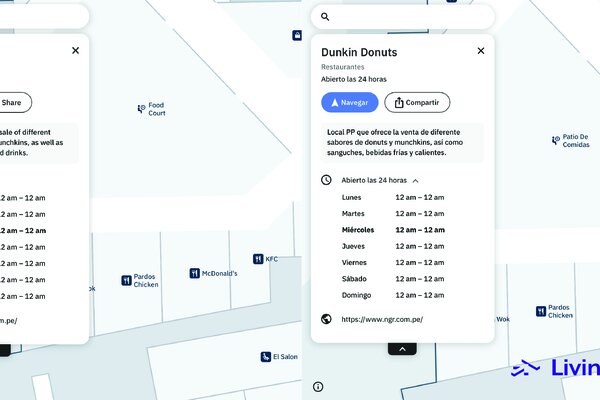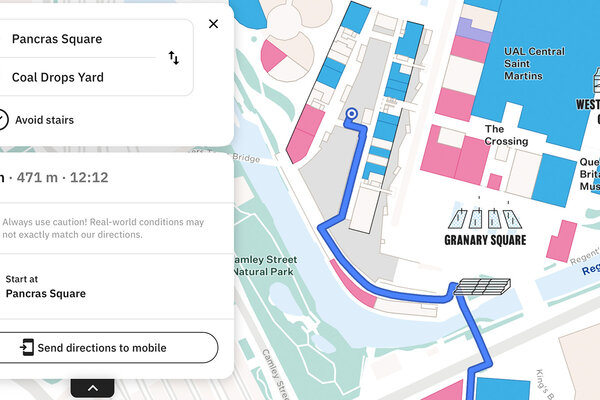The vital role of data analytics and AI in digital wayfinding

In a world bustling with activity, finding our way through complex spaces can be both challenging and time-consuming. This is where digital wayfinding steps in, revolutionising navigation by harnessing the power of data analytics and artificial intelligence (AI). By combining these two forces, we unlock the ability to react swiftly and efficiently to real-time data, fundamentally transforming how we navigate our surroundings.
The Data-Driven Foundation
Data analytics serve as the cornerstone of effective digital wayfinding. Every step, every interaction, and every decision made within a space generates data. This data, when aggregated and analysed, unveils insights that were once hidden. These insights form the bedrock of informed navigation strategies, offering a deeper understanding of user behaviour, traffic patterns, and overall spatial dynamics.
Enhancing the user experience
Imagine stepping into a bustling airport with an AI-powered digital wayfinding system at your disposal. As you proceed, your movements are captured by sensors and cameras, generating a stream of data. This data is rapidly analysed, allowing the AI to anticipate your needs. If your flight gate changes or there's a congestion hotspot ahead, the system can instantly reroute you, saving precious time and ensuring a smoother journey.
Real-Time Decision-Making
The true magic of data analytics in digital wayfinding comes to life when it meets AI. AI algorithms ingest, process, and react to real-time data at an astonishing pace. This means that as circumstances change—whether it's a sudden increase in crowd density, an unexpected obstacle, or a shift in user preferences—the AI adapts, ensuring that users are provided with the most relevant and up-to-date information.
Empowering Dynamic Responses
Consider shopping at a mall during the holiday season. A surge of visitors could result in overcrowding and potential bottlenecks. With data analytics and AI, the system can identify these emerging patterns and swiftly adjust, guiding users away from congested areas. This dynamic response not only enhances user experiences but also aids in managing crowd flow and minimising potential safety risks.
Predictive Capabilities
AI doesn't just react; it predicts. By analysing historical data, the AI can foresee peak traffic times, anticipate potential bottlenecks, and even suggest personalised routes based on user preferences. This predictive element transforms digital wayfinding from a mere tool into a strategic partner in navigation.
Innovation on the Horizon
As technology advances, the possibilities for data analytics and AI in digital wayfinding are limitless. We're on the cusp of integrating augmented reality, voice recognition, and even personalised notifications based on individual habits. These innovations will not only make navigation more efficient but will also enhance our overall experiences within various spaces.
We at Living Map are embracing AI and the impact it will have on our overall approach to enhancing our Digital Interactive Wayfinding Platform. In an era defined by rapid movement and constant change, digital wayfinding has emerged as a game-changer. By embracing the power of data analytics and AI, we're shaping the future of navigation. Real-time data empowers us with insights, while AI enables us to react swiftly and intelligently. Together, they create a dynamic duo that transforms how we explore complex environments, saving time, enhancing safety, and ensuring that every journey is a seamless and informed one. As we look ahead, it's clear that data-driven navigation is the compass guiding us towards a more efficient, interconnected world.
Request a demo
Experience the power of our mapping, wayfinding, and asset tracking technology for yourself. See how our software can enhance your facility.






